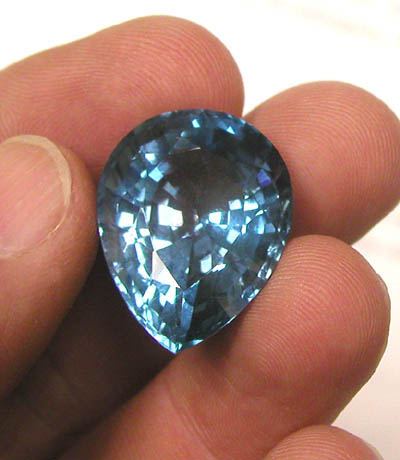Blue Topaz

As is the case with almost all colored topaz, this particular stone has been treated by irradiation. The presence of the long-lived activation products tantalum-182 and manganese-56 indicate that it was exposed to neutrons at a reactor. It might also have been irradiated with electrons at an accelerator. The activity is so low as to not be detectable with a pancake GM.
Following neutron irradiation, topaz can have a brownish appearance. Heat treatment is then used to remove the yellow component and leave the gem with the blue color. My understanding is that the high energy (fast) neutrons to which the topaz is exposed dislodge atoms in the crystal lattice. The resulting vacancies serve as "color centers" because of electrons that accumulate there. I would guess that any yellow color was due to energized electrons that move to impurities in the crystal. The heat treatment would free the electrons from the impurities and eliminate the yellow, but it would not repair the neutron-created defects in the crystal structure.
Before the topaz can be distributed in the U.S., sufficient time must be given for the short-lived activation products to decay away. Even though this example contains some long-lived nuclides, the levels are so low that they cannot be detected with a simple hand-held survey meter.
Note that the Nuclear Regulatory Commission requires that irradiated gems must be identified as such.
Size: 25 x 19 x 13.5 mm
Weight: 8.65 grams (43 ct).
Reference
NRC Information Notice 90-62. Requirements for Import and Distribution of Neutron-Irradiated Gems. September 25, 1990.
